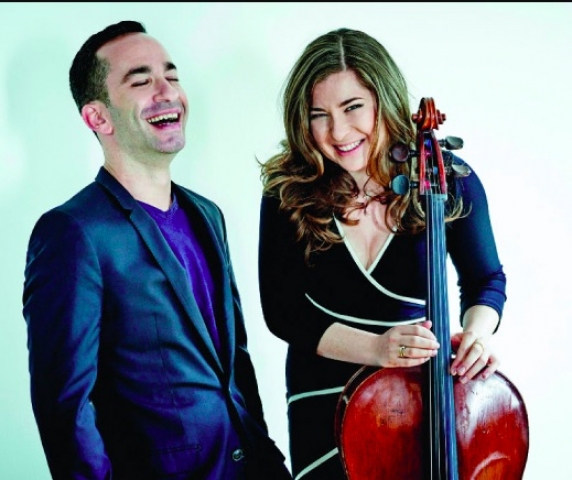Barnatan and Weilerstein at Carnegie
Woo Too with Mendelssohn and a New Steven Mackay
By: Susan Hall - Oct 18, 2017
Alicia Weilerstein and Inon Barnatan
Zankel Hall
Carnegie Hall
Mendelssohn Cello Sonata No. 2 in D Major
Britten Cello Sonata in C
Steven Mackey Through Your Fingers (Co-Commissioned by Carnegie Hall)
Rachmaninoff Cello Sonata
New York, New YorOctober 17, 2017
Could this be the beginning of a beautiful friendship, a friendship that works as well as that between Yo Yo Ma and Kathryn Stott? Both artists have big reputations. Barnaton has a more varied performance schedule than does Weilerstein. Stott never emphasized public performance except with Ma. Barnatan's availability in large halls as well as small, as a chamber artist, a soloist alone or with orchestras, his adventures with innovative form have enhanced our musical lives. He does not have Weilerstein's dramatic range, but he has passion and perfection in spades. When you talk to people after a concert in which he has performed, even the uninitiated are wowed. They may not know why, but they sense it, that magic.
Clearly the chemistry between the two artists is good. Weilerstein sits a bit to the side, but forward. Barnatan turns occasionally to admire and also to pick up her beat.
What is exciting is their constant dialogue in the service of the music. Mendelssohn's Sonata is particularly charming and varied. The outer two movements sparkled as the cello often soared against the pulse of the piano. In the final movement, scales frolicked and arpeggios spilled out. These movements stood against the solemn second movement with minor staccatos in the piano and hollow cello pizzicati. A warm lyrical theme then emanates from the cello, with crescendos and decrescendos.
Mendelssohn's third movement begins with a chorale for piano solo. Bach hovers under the notes, with a response from the audience almost invited. The cello does respond with recitative. It is a glorious dialogue which we hear played to perfection by two artists who are clearly grooving on each other, as they listen and respond on notes and in silence.
When Benjamin Britten was asked to talk about his Cello Sonata, the audience thought they were in for an informative lecture. He started and ended, "Cello Sonata in C by me." Since he had not given a tonal title to a piece in over fifteen years, the C had significance. Britten composed the sonata for the great cellist Mistislav Rostropovich. With Britten at the piano, the first rehearsal started with five whiskies. Barnatan and Weilerstein found the impish scherzo pizzicata and also the mournful and majestic third movement. Who knows what they were drinking back stage.

